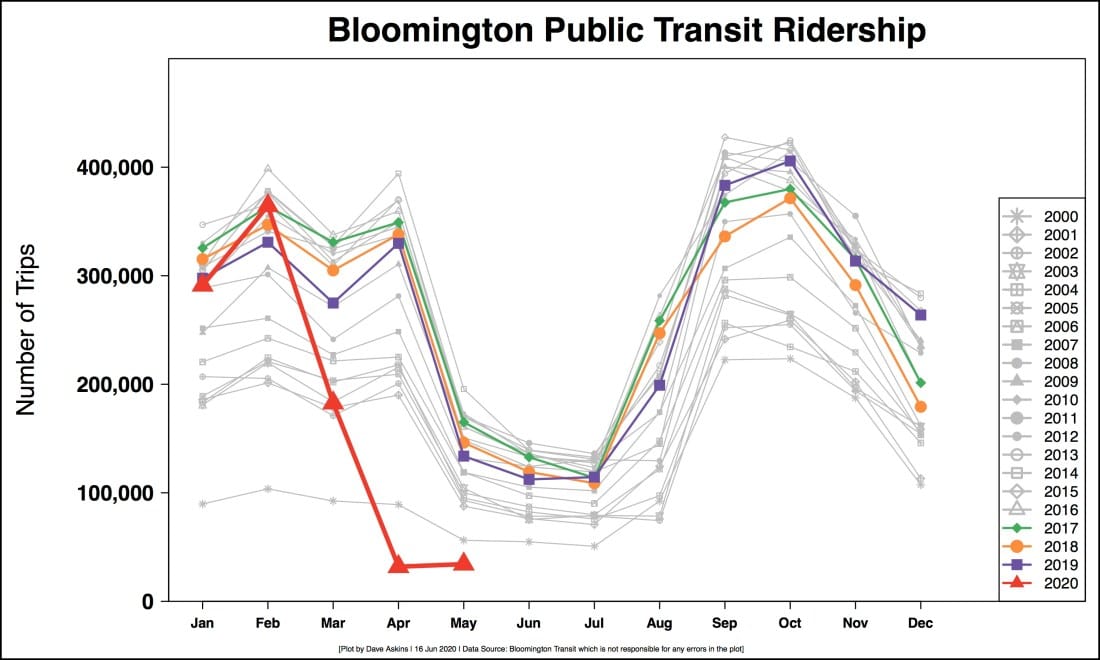Bloomington public bus ridership starts to claw back a bit from COVID-19 impacts


Last month the Bloomington Transit (BT) board got clear look at the impact the COVID-19 pandemic was having on fix-route bus ridership. The April numbers were down about 90 percent from April a year ago.
On Tuesday, the May monthly ridership numbers reported at BT’s board meeting were still dramatically down from the same month a year ago—34,256 rides this May compared to 133,798 in May of 2019.
But that’s a 74-percent drop—which reflects an improvement compared to last month, even if a small one.
The numerical trend from April to May is typically downward, which is connected to the departure from town by Indiana University students. About 70 percent of BT fixed-route ridership is made up of university affiliates.
But this year, May eked out a small improvement, from 31,938 rides in April to 34,256 in May.
Zac Huneck, BT’s planning and special projects manager, told The Square Beacon the daily ridership leveled off at around 1,200 trips during the height of the COVID-19 shutdown. “The is perhaps an indicator of how many people in town are truly dependent on transit for transportation,” he said.
The week-by-week picture shows BT ridership on a slight but measurable upward trend. The week starting on May 31 going through Jun 6 was the first week to nudge over the 10,000 rider mark since mid-March.

For that first week of June, ridership was down about 65 percent compared to the same week last year. BT has been running fewer buses during the COVID-19 shut down than it normally does.
At the board’s Tuesday meeting, general manager Lew May chalked up the slight improvement to the increase of service on June 1 to include more hours. Up to then, BT had been running on a modified semester break schedule.
It has now transitioned to a summer break schedule with some exceptions. One exception is that service ends for most routes around 9:30 p.m. instead of 11 p.m. Another departure from normal summer break service is that the 6 Limited and 9 Limited service won’t not be offered during the summer break this year.
May told board members that the downtown transit center is still not open to the public, which means public restrooms aren’t available. A portable toilet has been placed at the center.
The ticket window is now open to the public—for buying tickets on Miller Transportation’s Hoosier Ride service, May said.
But BT passengers still won’t need to buy tickets to board local buses for at least another month. May told board members that current operations, which include no-fare boarding through the rear doors of buses and time-and-a-half hazard pay for drivers, would continue for the next month.
May said that would be re-evaluated for the next monthly board meeting on July 23.
May said drivers are averaging between 25 and 27 hours a week, so the time and a half hazard pay works out to the equivalent of about 40 hours a week.
Responding to a question from the board, May said that the $7.8 million in CARES Act funding that BT had received can be used to pay for a range of expenses, including hazard pay.




Comments ()